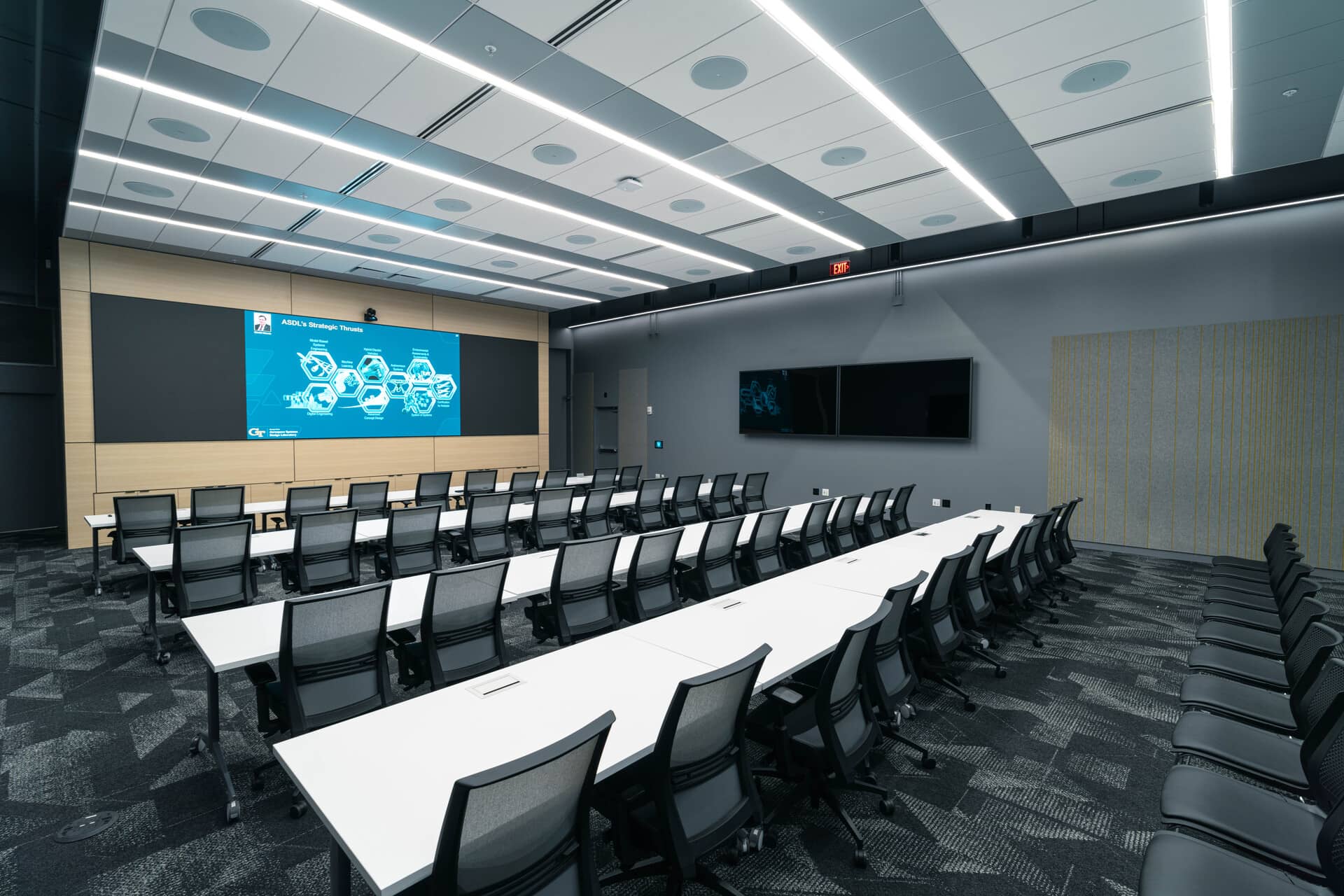
Collaborative Design Environment
Collaborative Design Environment

The “Collaborative Design Environment” (CoDE) is a dedicated facility enabling the analysis and conceptual design of complex systems by supporting the cognitive processes and functions of researchers and subject matter experts. The CoDE fosters multidisciplinary collaboration for rapid-turnaround design and analysis. By collocating subject matter experts, hardware technologies, and relevant software tools in a reconfigurable “war room,” communication within the design team is enhanced and the speed and quality of design iterations is increased. The CoDE enables researchers to generate designs and perform in-depth analysis by utilizing a plethora of integrated modeling, simulation, and analysis tools in a team-centered environment.
As a dedicated design facility, the CoDE stands alongside similar state of the art technology-enabled environments such as the Jet Propulsion Laboratory Project Design Center, the Aerospace Corporations Concept Design Center, and the European Space Agency Concurrent Design Facility. The ongoing success of this type of facilities over the last decade and the decreasing acquisition costs of relevant hardware and software technologies will surely foster the creation of similar facilities across premier research entities throughout the world.
As part of its academic mission the ASDL provides students with an opportunity to gain valuable practical experience by participating in research efforts that take place in the CoDE, thus forging a highly capable and competitive engineering workforce.
